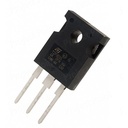The DIY Spider Robot is an educational and engaging robotics kit designed for hobbyists, students, and enthusiasts. This kit includes all the components needed to build a spider-like robot, complete with multiple legs that mimic the movement of a real spider. It is an excellent way to learn about robotics, electronics, and programming through hands-on experience. The robot can be controlled and programmed to perform various movements and tasks, making it a versatile and fun project.
Key Features:
- Complete DIY kit for building a spider robot
- Multiple articulated legs for realistic movement
- Includes microcontroller and motor drivers
- Compatible with popular programming platforms (e.g., Arduino, Raspberry Pi)
- Easy assembly with detailed instructions
- Teaches basics of robotics, electronics, and programming
- Expandable and customizable for advanced projects
- Powered by rechargeable batteries
- Number of Legs: 4 to 8 (varies by model)
- Power Supply: Rechargeable batteries (varies by model, typically 7.4V LiPo)
- Motors: Servo motors for leg articulation
- Microcontroller: Compatible with Arduino or similar platforms
- Connectivity: Wired or wireless (varies by model, can include Bluetooth or Wi-Fi modules)
- Control Method: Programmable via USB or wireless connection
- Materials: High-quality plastic and metal components
- Dimensions: Varies by model, typically around 20cm x 20cm x 10cm
- Weight: Varies by model, typically around 500g to 800g
- Educational projects and STEM learning
- Robotics competitions
- Hobbyist and DIY robotics
- Research and development in robotics
- Interactive and entertainment purposes



